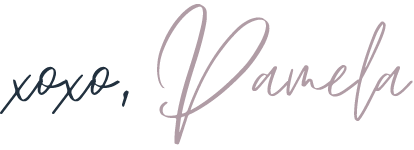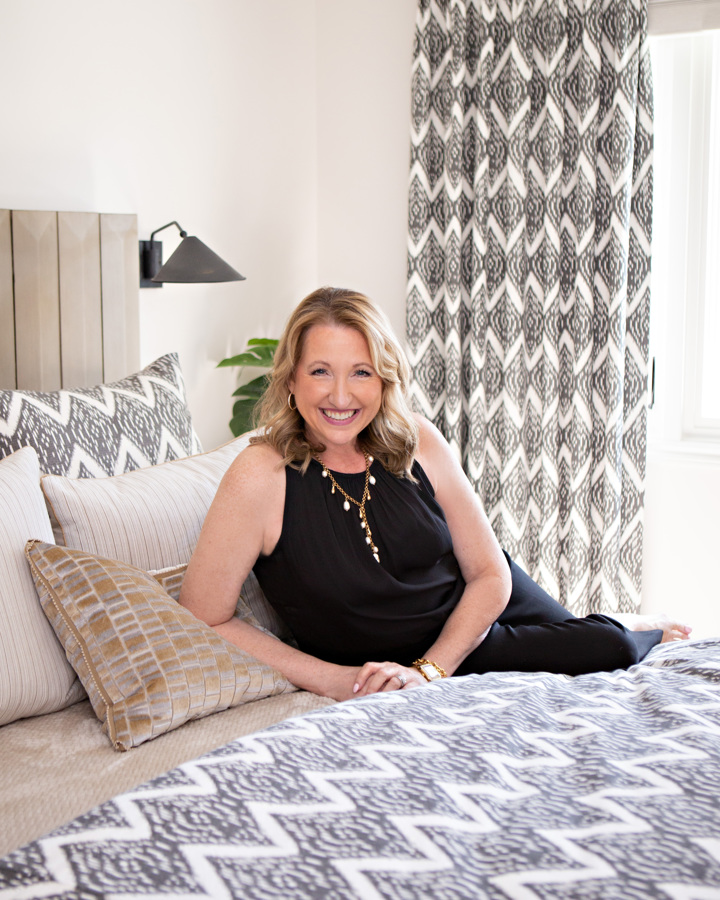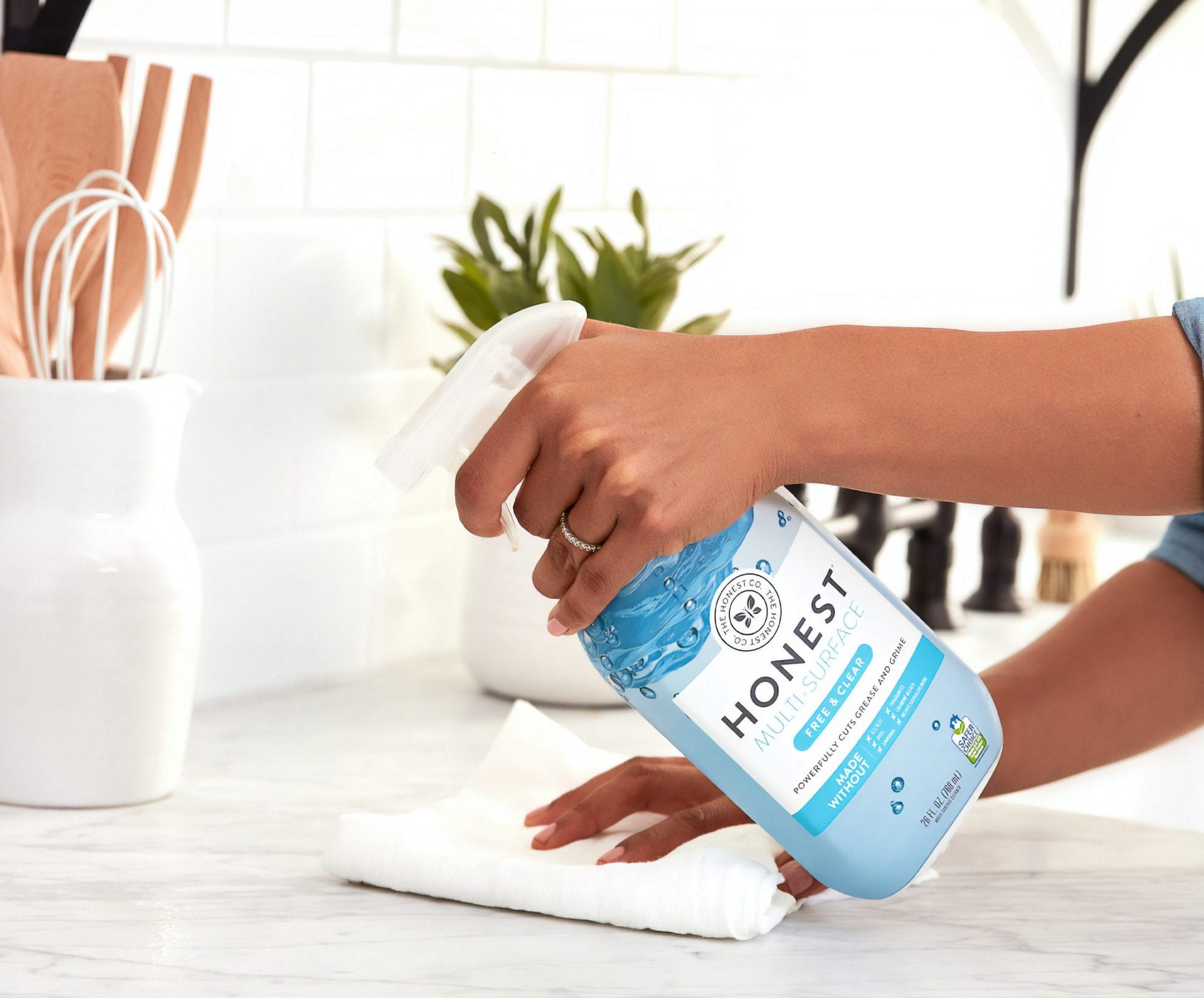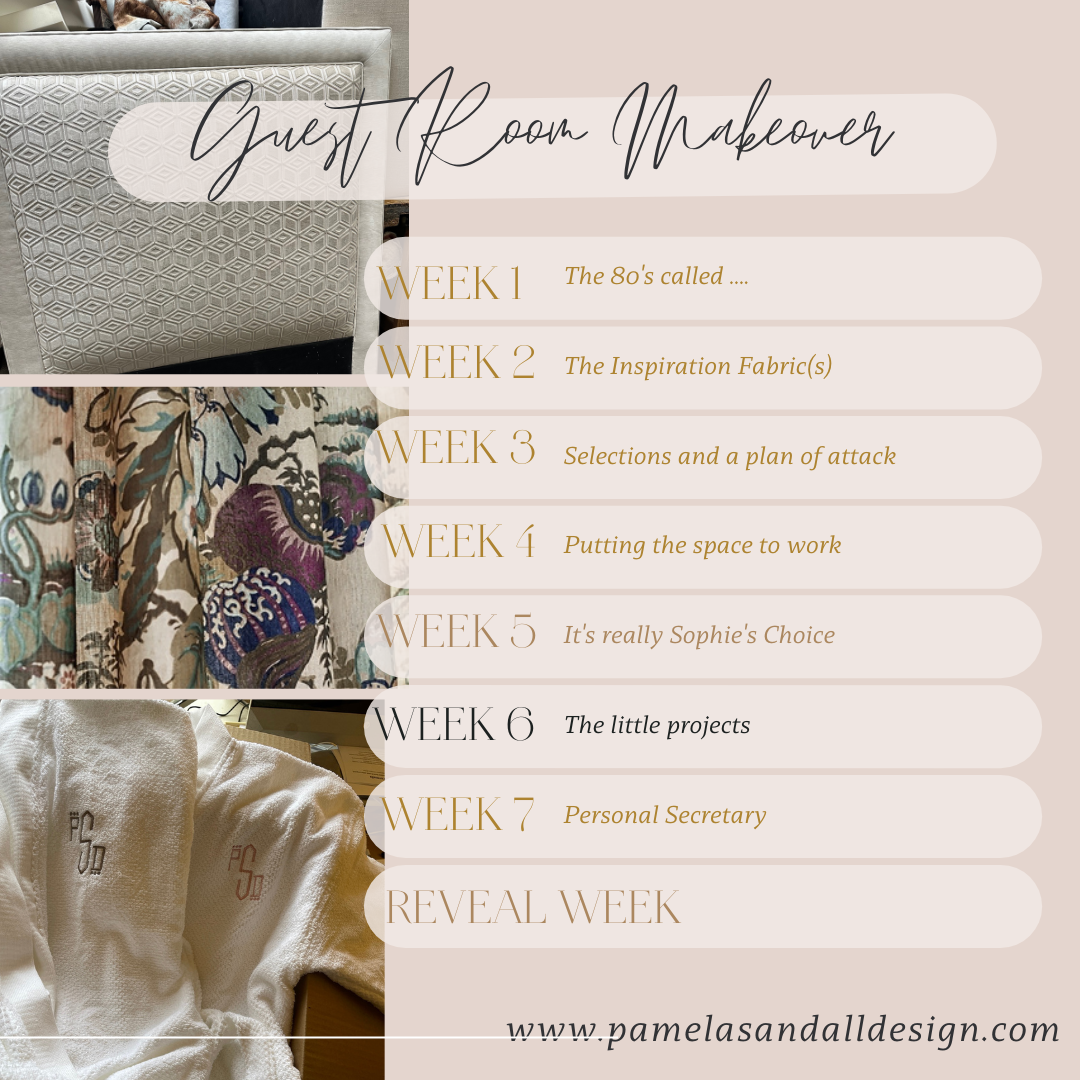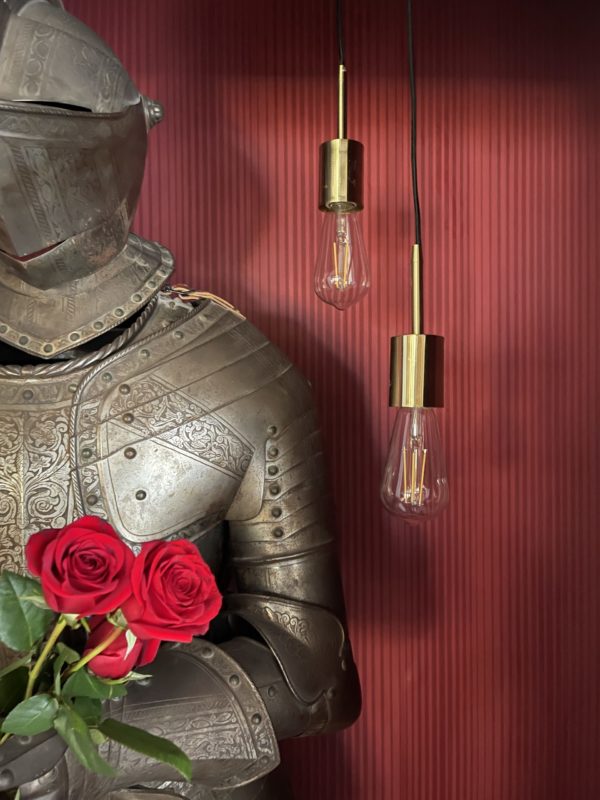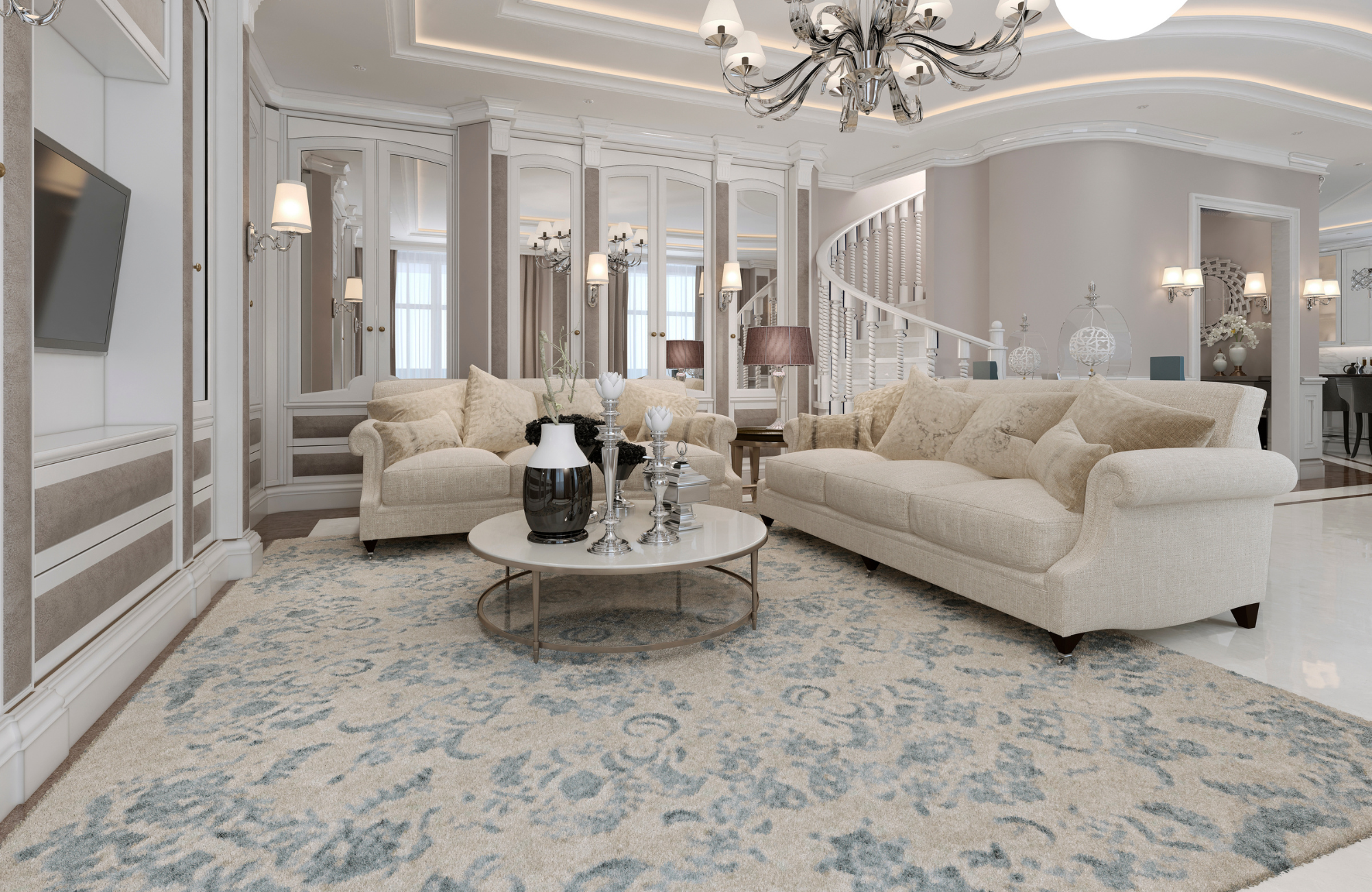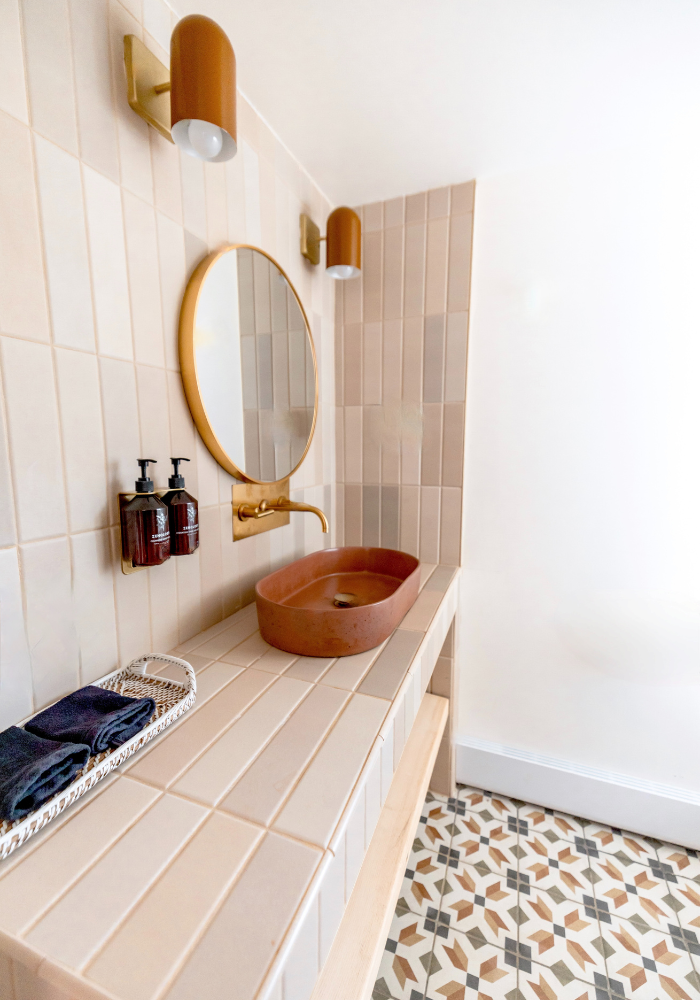
When you started your last home decor project, you probably scrolled through Pinterest or Instagram for inspiration. You might have found a room full of fun or interesting patterns that excited you just looking at it. But the idea of combining those patterns might have felt overwhelming when it came to recreating that look. As a result, you may have played it safe with solid fabrics and neutral colors. Your new room looks fine, but you may long for what could have been.
Or you paused the project, but now you’re ready to dive into pattern mixing and have some fun. Let’s explore how we confidently mix and match patterns in your space.
Step 1: Experiment with a Curated Color Palette
The first step in mixing and matching patterns is to develop a color palette for your space. I recommend selecting a primary color, a secondary color, and an accent color. You can always add more, but starting with these three will give you plenty of fabric options without feeling overwhelmed. Think of it like math:
- 60% primary color
- 30% secondary color
- 10% accent color
This approach is also great for creating a balanced plan in a shared space. You can start with the favorite color of the person who will use the space the most. If you need more clarification on your palette, skip step two and let your inspiration item guide your color choices.
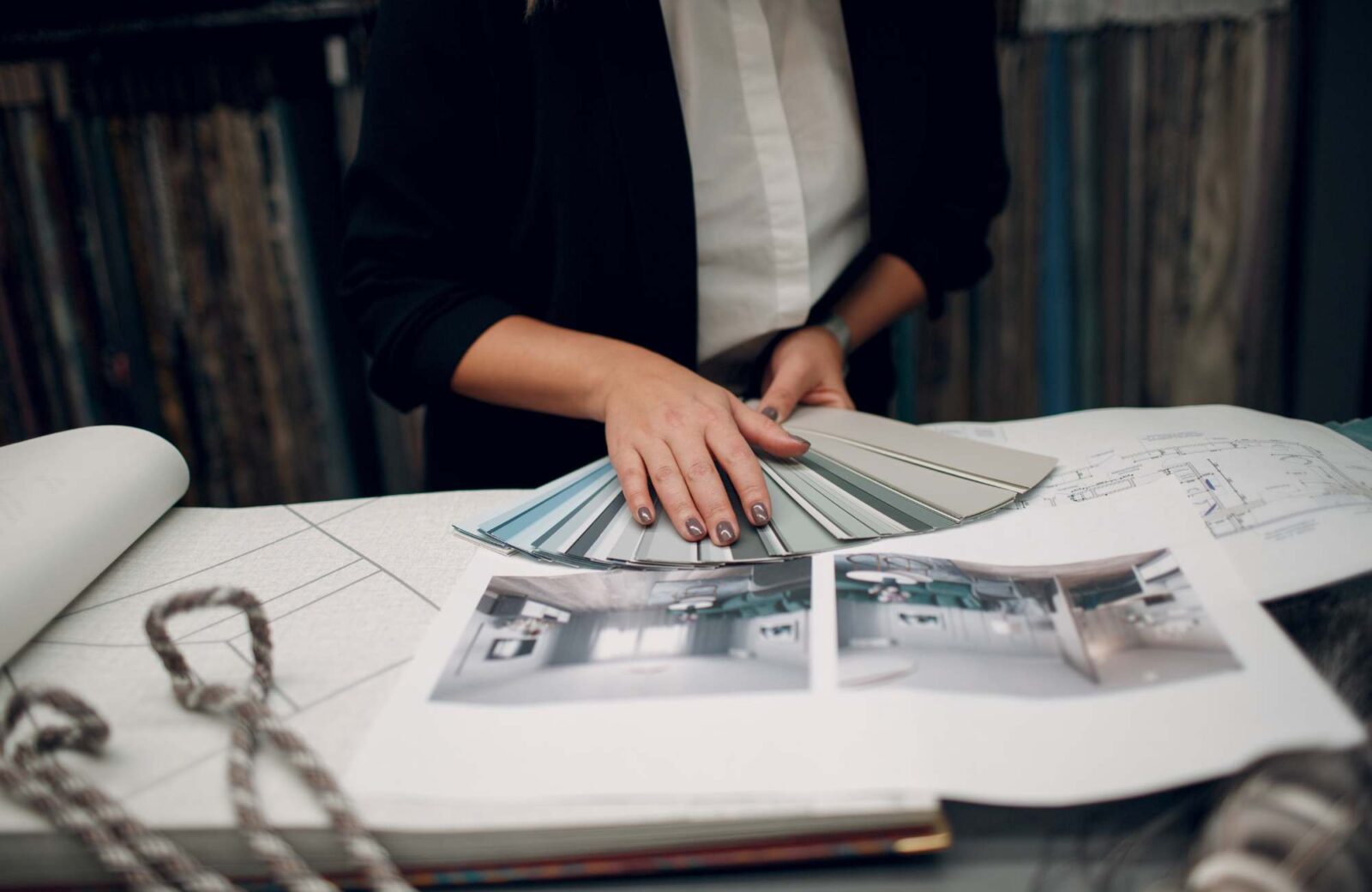
Step 2: Choose Your Key Design Bridge Element
Your inspiration item acts as the “bridging element” for your space. It’s the piece that helps you build your design plan. This item could be an area rug, a statement piece of art, or even a unique wallpaper. It might be something you shop for specifically or something you already have in your collection.
Check out inspiration pieces from past projects:
- A client shared a beautiful handful of rocks from the coast of France for the color palette of her bedroom.
- In a kitchen project, a client made a beeline for this fantastic and colorful Mexican tile at the tile store!
- I’ve even had instances where the inspiration was a fabric that didn’t make it into the final design but set the tone for the entire plan!
If you haven’t already picked your palette, go back to step one and do so! Need more help? Read How to Discover Your Interior Design Style for more insight!
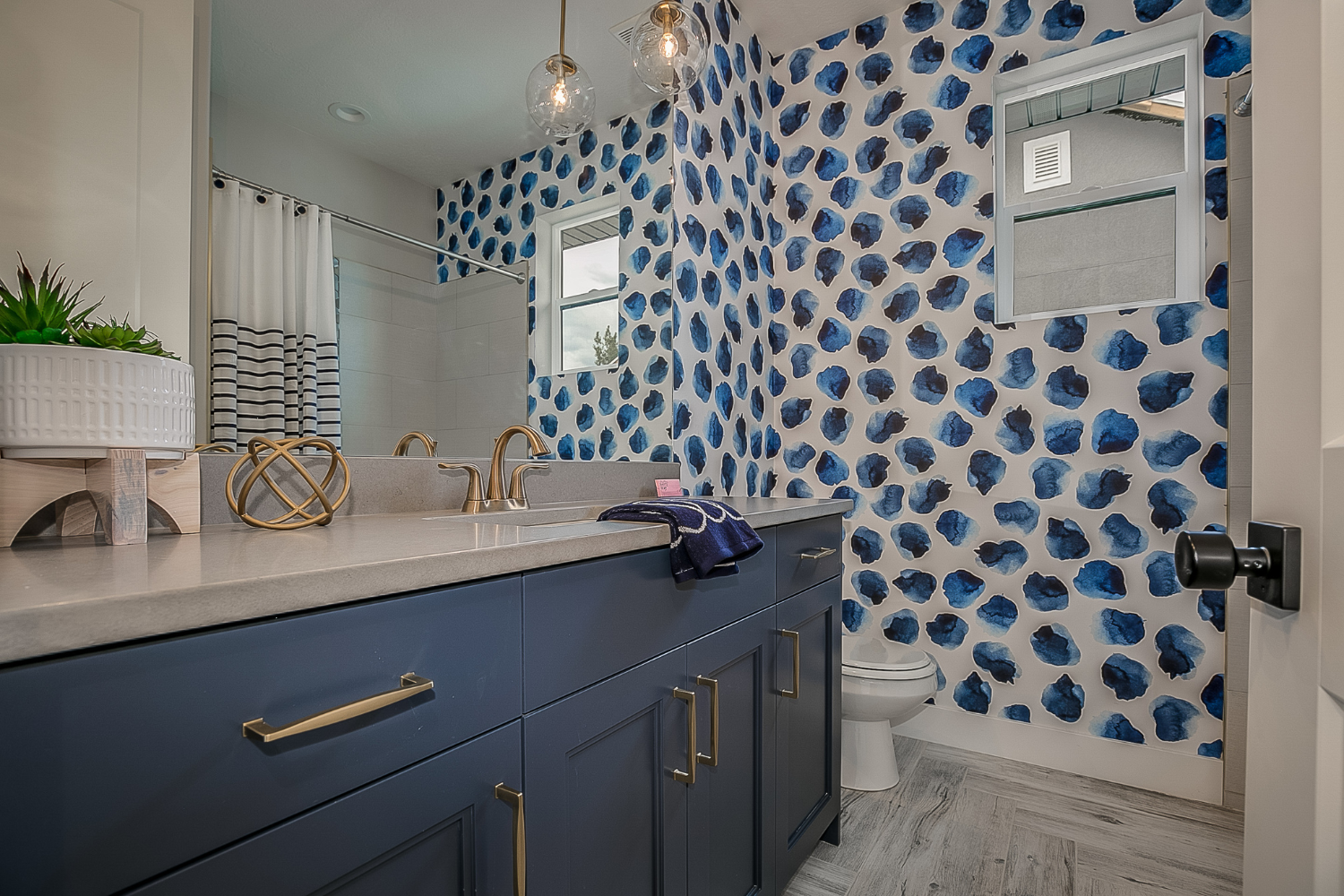
Step 3: Source Items in Various Scales
You’ll want the patterns in your fabrics and finishes to be a combination of sizes, scales, and patterns based on your selected colors. In our office, we use the following terminology for pattern matching: random, repeat, and mini.
Random: a big, bold, splashy pattern. Depending on the energy you want in the room or the color you use in this pattern, you may not want too much of it.
Repeat: something that has an even and repeating pattern. Think of a stripe; it does not need to be just a stripe. Anything that repeats will do the trick. This gives a little uniformity to the overall design. This is usually your middle-scaled pattern – but not always! There are some pretty big repeating patterns available!
Mini: a small-scale pattern that is typically an allover pattern. Sometimes you’ll hear this referred to as “ditzy” (no joke, lol!). Think of small polka dots or gingham. Mini is typically your smallest scale pattern.
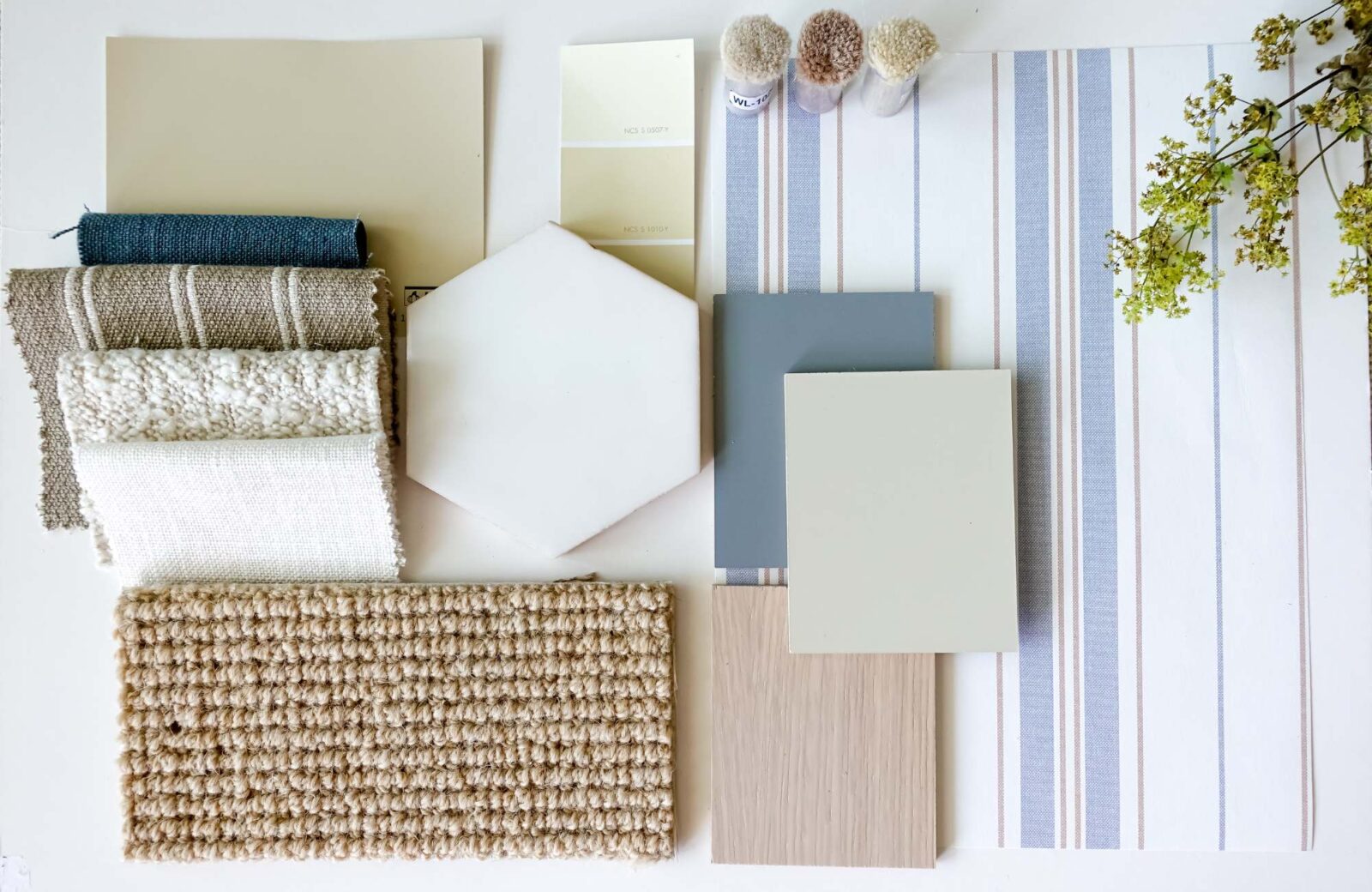
Step 4: Test Your Design with Proven Tools
So, how do we see it all together? It depends. In our office, when we are dealing with fabrics and papers, there is nothing better than having the actual samples all laid out on the table. However, there is also something to be said for pulling things together digitally when necessary. Having everything in the same room is not always possible, so we rely on a combination of hand samples and digital renderings.
If you’re tackling this at home, you’ll want to get as many samples in the same room as possible. And if you’re working with an inspiration item, such as a rug, you’ll want to bring those samples into your home and view them all together!
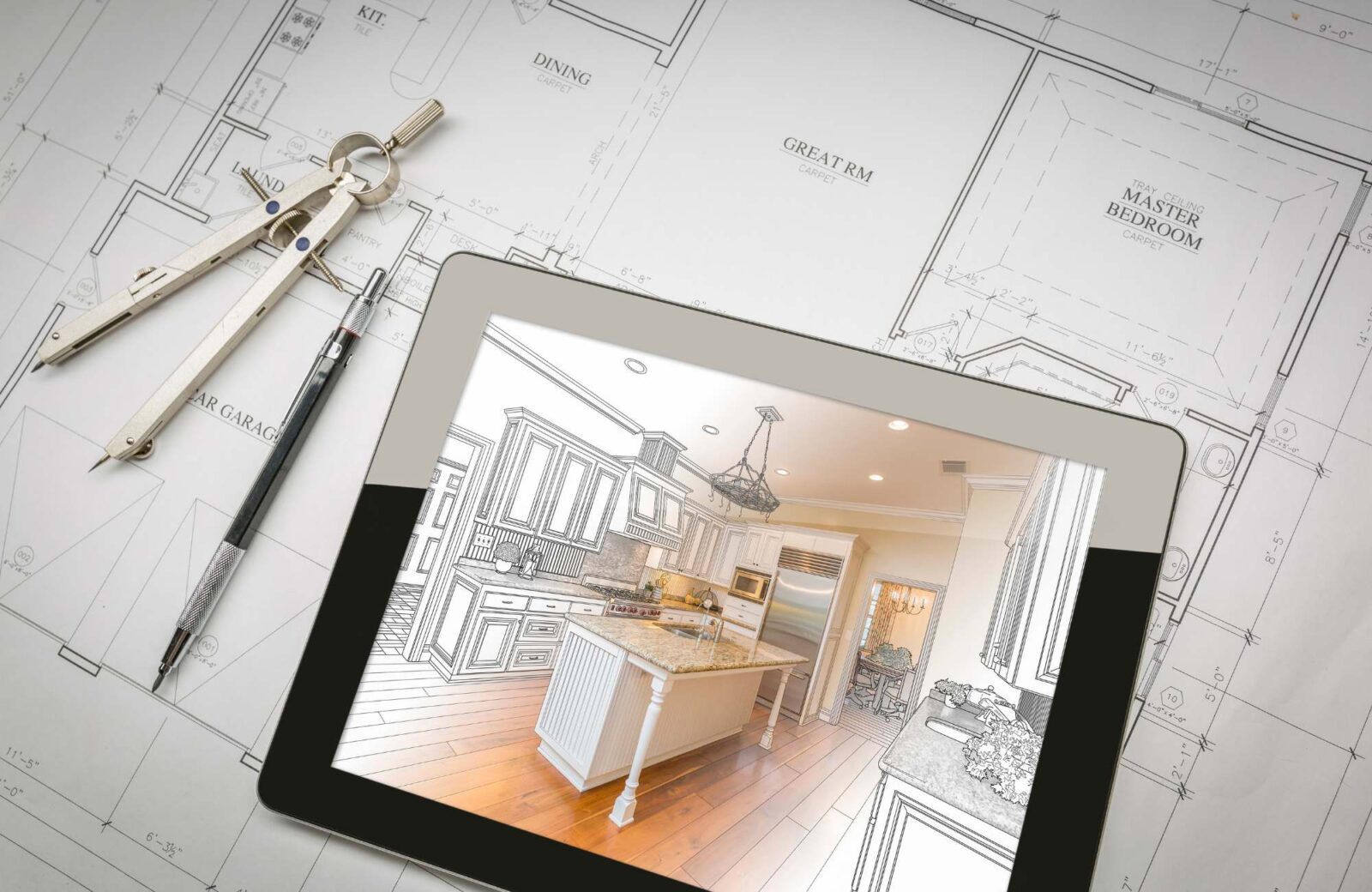
Step 5: Bring It All Together for an Exciting Install Day
Nothing is quite as exciting as seeing all the elements come together in your space at those final moments. Making so many decisions is, without a doubt, a time-consuming process. This process is one we do for every space, every room, and every home for every client! But the trade-off is this remarkably customized and personal space. Each selection, fabric, and pattern is picked with intention, and when you see it all together—whether your design team has done it or you tackled it yourself—it’s pretty incredible.
Pulling together fabrics and finishes is undoubtedly the BEST part of my job. Bringing all the elements together is what makes each project unique.
I’m constantly saying I don’t like to use the same item (fabric/accessory/furniture item) more than once, but the truth is that when you bring so many unique and curated elements together, it doesn’t really matter that someone has one or two of the same, as it won’t look the same in your home.
If you need help with the palette or styling your space, don’t be shy; reach out! We’d be happy to help.
